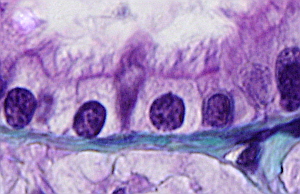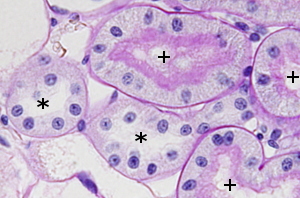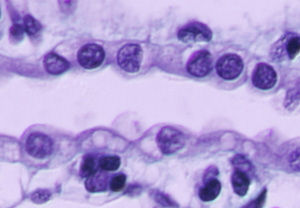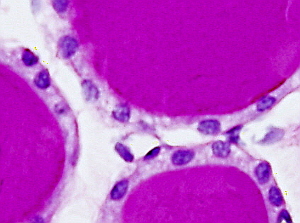Animal tissues. Epithelium.
SIMPLE CUBOIDAL
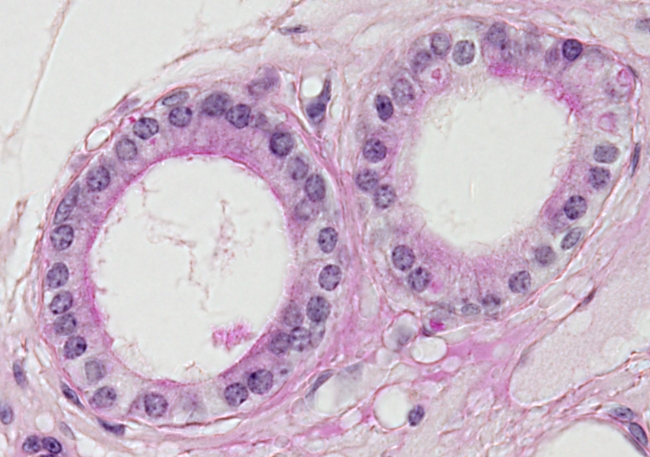
Species: mouse (Mus musculus; mammal).
Technique: PAS-haematoxylin, 8 µm thick section, paraffin embedding.
The simple cuboidal epithelium is a layer of cube-like shape cells, i.e, are as wide as tall. This can be observed when it is cut perpendicularly to the epithelial surface (see also Figure 1). Actually, it should be named as isoprismatic because cells have more than 8 faces, and the faces are not regular. The nucleus is rounded and located centrally or slightly basal in the cell. Sometimes, the apical surface of the cell shows cilia, flagella or microvilli.

This type of epithelium lines many ducts and tubes in the body. It is found in secretory epithelium (thyroid gland), excretory ducts (exocrine gland ducts), protection surfaces (ovary surface and pigmented retina), ducts for absorption/excretion (renal tubules and choroid plexuses) and in the respiratory ducts (lung bronchioles).
More images
